
Ronnie Moore was an outstanding Kiwi sportsman, an international speedway rider who won the Individual World Speedway Championship in 1954 and 1959. He earned 13 international caps for the Australian national team, 50 for New Zealand and 21 for Great Britain in career that spanned 1949-75. In addition, he was a pretty handy F2 racer in 1957-58.
Born in Hobart, Tasmania, Australia on 8 April 1933, his father, Les Moore was also a champion rider who built a ‘Wall of Death’ in his backyard, and later turned it into a business, performing at Royal (Agriculture) Shows around Australia.
Ronnie began riding the wall at 13, then got his speedway start on an old Rudge after the family had moved to New Zealand in 1947.
Les stunned the NZ Speedway world when he rode the Rudge to a track record in Wellington, beating local star Bruce Abernethy. Les then got an offer to help set up a new track in Christchurch so the family shifted south.
While born in Australia, Ronnie always considered himself a Kiwi. He had to wait until he was 15 – the legal age to get a drivers licence – to have his first official race drive and later reckoned he could barely touch the foot-pegs on the Rudge when he lined up on the dirt track at Tai Tapu in 1948.

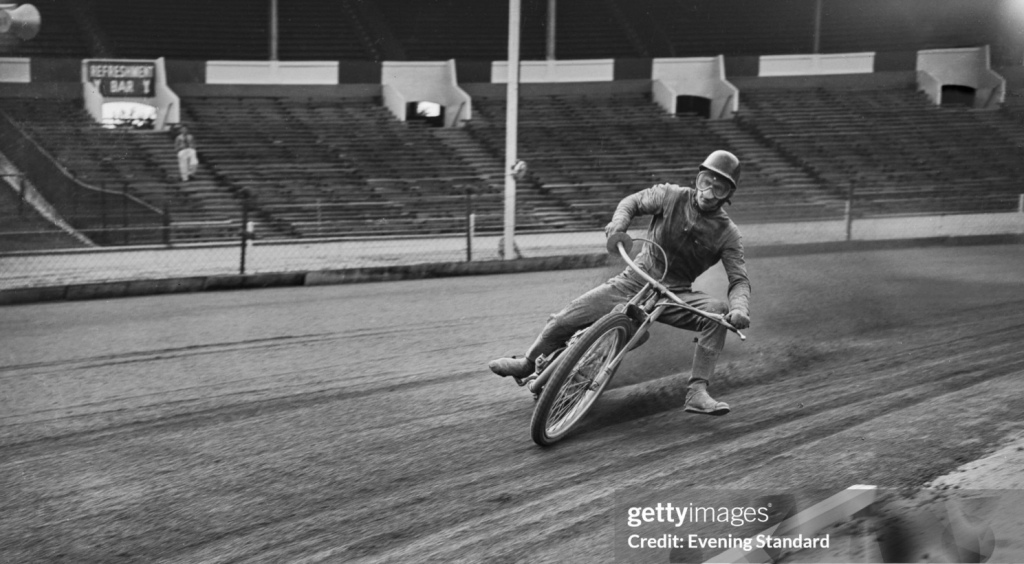
In 1949, Moore began racing on a regular basis at his father’s Aranui Speedway in the Sandhills near Christchurch. He remembered counting the trucks as they brought all the dirt from the Lyttelton tunnel to create the track and arena.
Stuff.co.nz records that “His career clicked when he started riding a specialist, secondhand speedway bike his dad brought off Norman Parker,” a leading English racer who competed in New Zealand.
He moved to the UK in 1950. Wimbledon promoter Ronnie Green spotted his potential despite crashing through the wire-mesh safety fence on his first trial ride! He raced for the Wimbledon Dons in the British League, becoming team captain after two years, and continued with them until 1963, apart from two years in the late 1950s when he raced F2 Coopers.
“Speedway was second to football then in people going through the turnstiles, with crowds of up to 15,000 just for a league match.”
Moore was the youngest ever rider to qualify for a Speedway World Championship. He did that in 1950, aged just 17. Four years later, he became New Zealand’s first motorcycle world champion when he took the 1954 championship in front of 80,000 people at Wembley. Even more remarkable is that he was only 21 and took five wins from five starts, despite riding with a leg that had been broken badly not that long before in five places.
He had slid into a safety fence at a meeting in Denmark and stopped dead, his leg was bent around the bike’s handlebars. While the Danish doctors predicted a recovery time of nine months, Moore sought the advice of a Kiwi Harley Street surgeon who had made his name getting fighter pilots back in the sky quickly. His thigh to toe plaster cast was whipped off and the first of two braces were made which allowed the bone to heal, while reducing the rate at which his muscles would otherwise have withered.


He was World Championship runner up in 1955-56 to England’s Peter Craven and Swede Ove Fundin. Fellow Kiwi, Barry Briggs won the championship in 1957-58 when Ronnie raced Formula 2 cars while at the peak of his powers.
He formed a two car team – Kiwi Equipe – with fellow EnnZedder Ray Thackwell – father of Mike – and they ran a pair of Cooper T43 Climax’s in 1957-58.
The pair of them went very well, not least in Ronnie’s case because he had been dabbling with cars at home each summer. He and his dad bought a pair of Kieft 500s in 1951, the small engines were soon replaced with supercharged 1000cc Vincent Black Shadow Vee-twins. The cars were very much outright contenders in the Formula Libre. Ronnie recalled in ‘The Ronnie Moore Story’ that “The result was electrifying. I was once clocked at 125mph down Wigram’s main straight – and I was still in third gear.”

Moore had a very lucky escape at Wigram in 1952. He came through Hangar flat-chat to find Don Ransley in the middle of the track, Ransley had spun Les Moore’s Alfa 8C2300 sportscar, “I piled straight in and the world started spinning around.”
“It was like hitting an express train, the Kieft somersaulted and came to rest upside down with me trapped underneath. I was conscious and couldn’t move, then fuel started running out of the tank and over me. I was in agony and there was real danger of the car exploding. The three or four minutes I was under the car seemed like an eternity. Appalled at what happened, Don Ransley through caution to the wind, leapt out of the Alfa and single-handedly turned the Kieft over…Apart from surface abrasions, there was nothing seriously wrong with me a few days in bed wouldn’t cure. The poor Kieft was a different matter, about all I managed to salvage was a wheel and a few bits of the motor. The Alfa hardly had a scratch!”
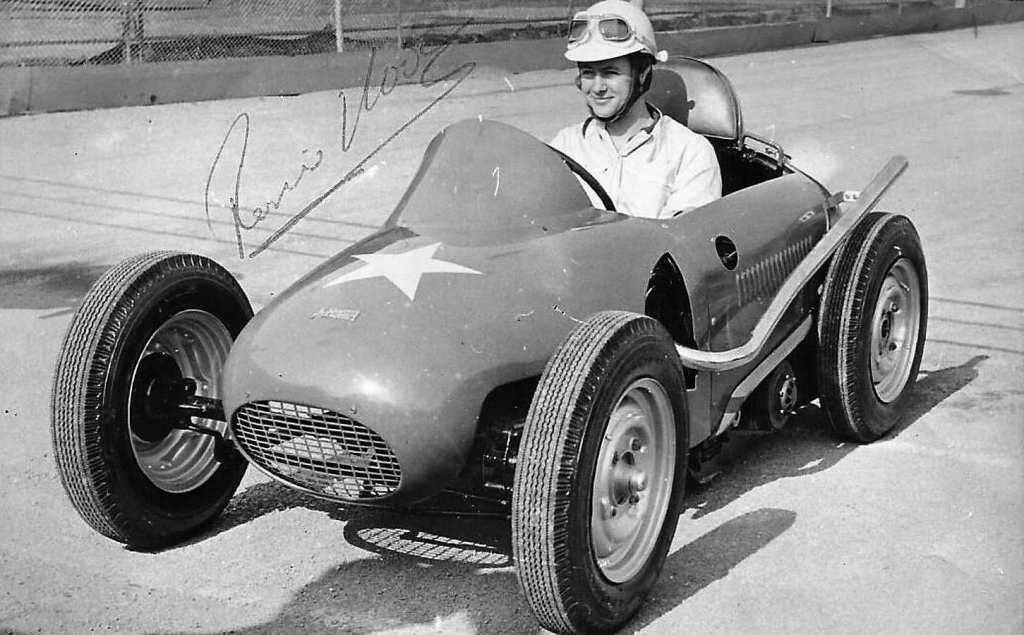

In two truncated F2 seasons – about eight meetings in 1957 and six in 1958 – Ronnie did very well against seasoned F1 drivers and up-and-comers. His best results include a win against few cars at Roskilde, third in the Rochester Trophy at Brands and a fourth at Mallory Park. The race winners of meetings Moore contested were Jack Brabham, Tony Marsh and Roy Salvadori aboard Cooper T43s, and Maurice Trintignant on a factory Ferrari Dino 156.
His 1958 results included third at Brands in May and a pair of fourths in the Pau GP and Annerley Trophy at Crystal Palace. Race winners in his six ’58 meetings were the Trintignant, McLaren, Ian Burgess, Stuart Lewis-Evans and Syd Jensen Coopers (T43 and T45 Climaxes) and Cliff Allison’s Lotus 12 Climax.
Moore’s promising and way-too-short car racing career came to an end after a plea from his wife Jill, who was in hospital, giving birth to twin-daughters, Kim and Lea at the time. “She asked me if I’d quit. You break an arm or a leg in speedway, but you get over that. But three of your friends have been killed in car racing this year,” she said.
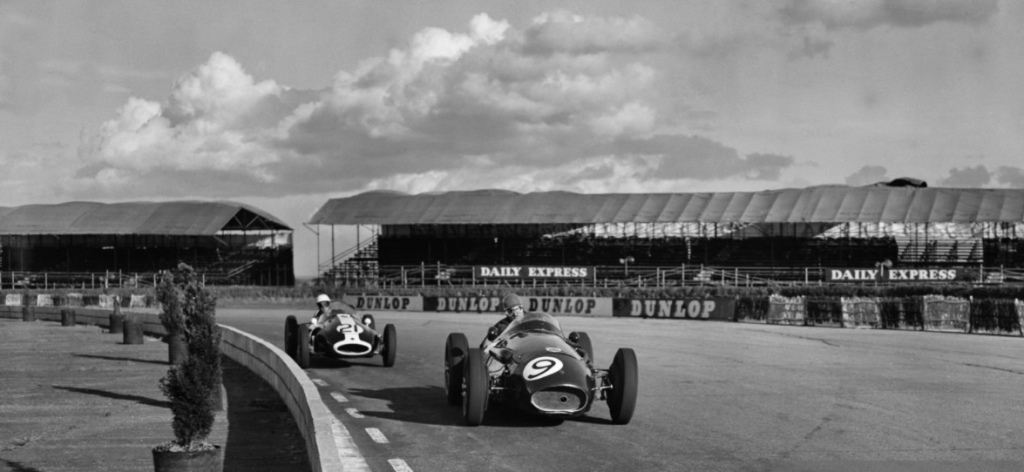

So Moore returned to Wimbledon for 1958, then in 1959 became Speedway World Champion again after fellow Kiwi Barry Briggs gave up some of his nitro-fuel so Ronnie could top up his tank before his fifth and final ride that day. He was runner-up again in 1960, to Fundin. Moore won the New Zealand Speedway Championship in 1956, 1962, 1968 and 1969.
He returned home in 1963 after another broken leg, the family was ready to stop shuffling between New Zealand and England. Ronnie invested in a motorcycle business and even re-activated the ‘Wall of Death’ show.
Sure enough he soon got the competitive twitches, feeling as though he had unfinished business and made a return to international racing in 1969, riding for Wimbledon and reaching the World Championship final at the ripe old age of 36. In 1970, he took the World Pairs Championship with fellow speedway great Ivan Mauger, at Malmo Stadium in Sweden .

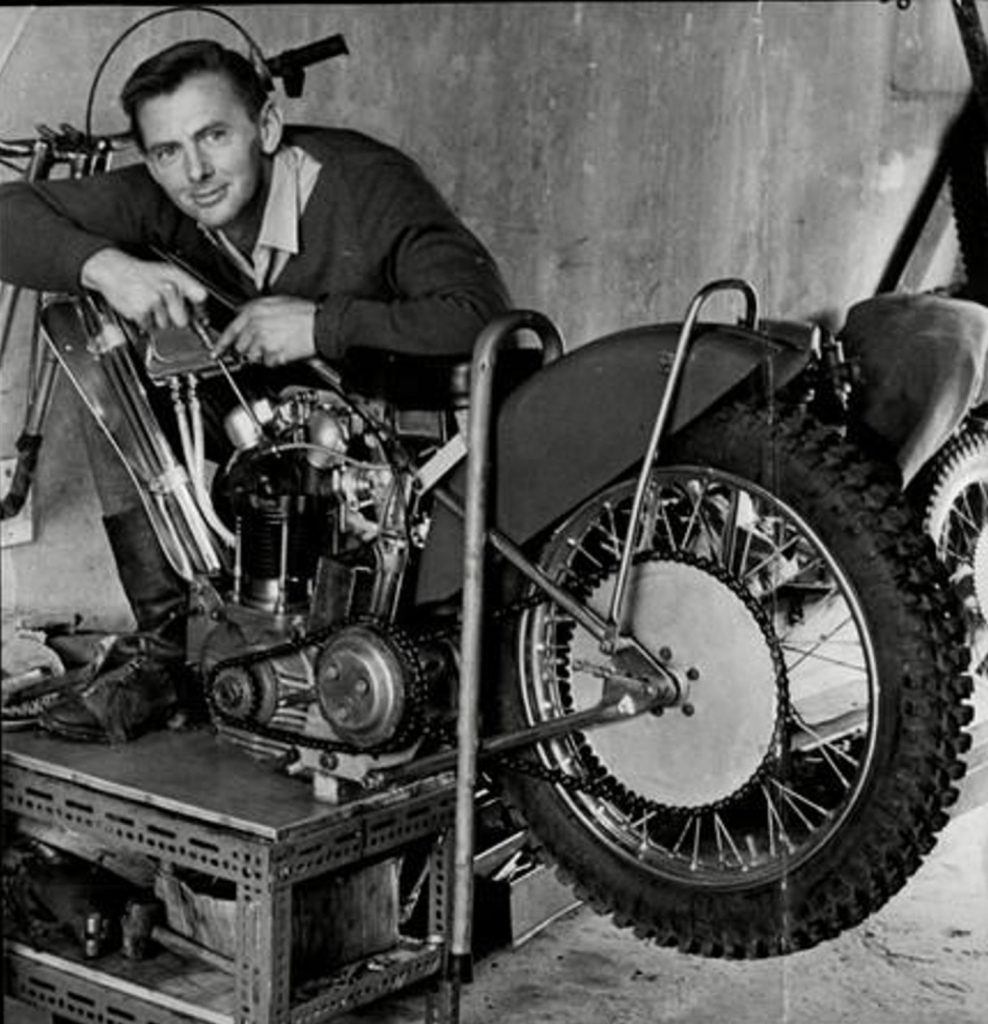
1974 saw the first ’Battle of the World Champions’ series held in New Zealand and Australia, featuring four world champions: Barry Briggs, Ronnie Moore, Ove Fundin and Ivan Mauger. It was during the Jerilderie Park Speedway round in New South Wales that Moore nearly lost his life. His gear was stolen and he had to borrow someone else’s to ride. He crashed, suffering serious head injuries and was lucky to survive.
Moore was awarded an MBE in 1985 by the Queen, is a member of the Motorcycle New Zealand, New Zealand Sports and World Speedway Halls of Fame and won the Canterbury Sports Legends award in 2014. The Canterbury Park Motorcycle Speedway was renamed the Moore Park Motorcycle Speedway.
Twice World Champion, three times World Championship runner up, four times New Zealand Champion, World Pairs Champion and many other career achievements, Ronnie Moore is a great icon of New Zealand motorcycle sport, he died of lung cancer in Christchurch on August 18, 2018, aged 85.

Jill, Ronnie, Shani, Gina, Kim and Lea Moore at home circa 1972.
Etcetera…
While Ronnie was enjoying success in the UK, Les had acquired two Jano Alfa Romeos, an 8C2300 (chassis number please?) and no less a P3 than chassis #50005, the car with which Tazio Nuvolari belted the Silver Arrows by winning the 1935 German Grand Prix.
Moore found the P3 tricky to drive but won the Lady Wigram Trophy on the RNZAF airfield of the same name in 1951-52. Les died at the wheel of a celebrated NZ Special, the RA4 Vanguard, at Saltwater Creek, Timaru in October 1960 after the car rolled.
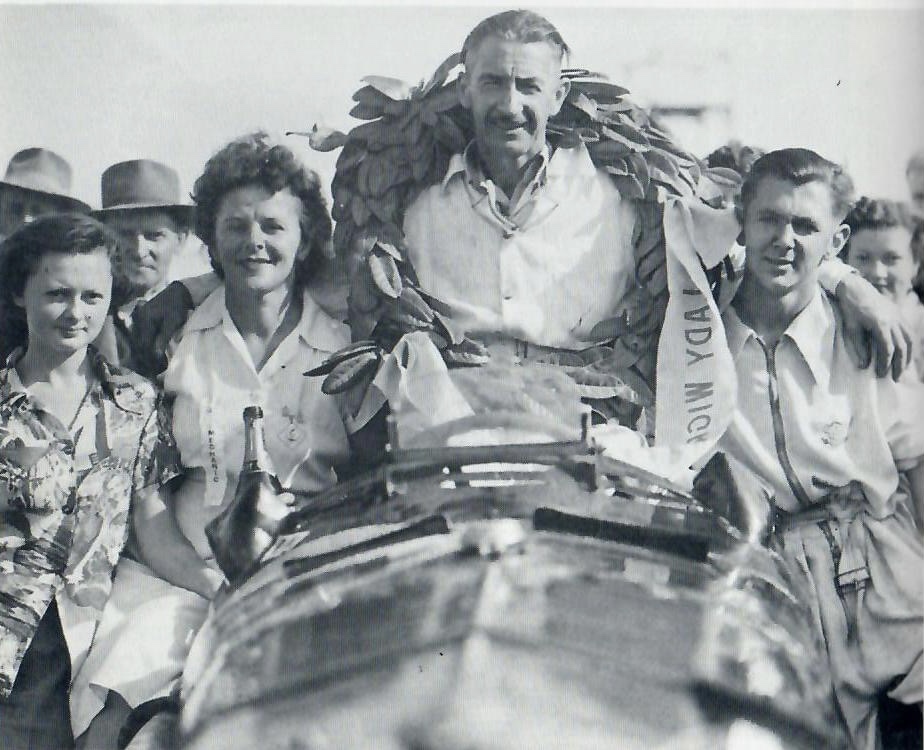

As mentioned above, the Atom was built by Allard to the order and brief of Wimbledon Speedway owner Ronnie Green in 1955, he was keen to ‘spice-up the show’.
Powered by a 500cc JAP speedway and clutch assembly, the 64-inch wheelbase car used an Allard Clipper chassis and many Ford components. Two were built. Click here for a great article about the project on The Allard Register website: http://www.allardregister.org/blog/2010/7/9/the-allard-atom.html


Showtime! Date and place unknown. “Ronnie Moore on the Bally-rollers and Graham Pickup with the microphone. A free show outside the wall to attract punters to the show,” recalled Lindsay Mouat.
Craig Norman chipped in, “I was too scared to watch the actual show but I vividly remember watching spellbound at his outside display. He had perfect control and balance.”

Credits…
This piece uses as a base an article written by Motorcycling NZ historian Ian Dawson on the occasion of Moore’s admission to the MNZ Hall of Fame in 2012. Getty Images, F2 Index, Graham Woods, Chris Read Collection, ‘The Ronnie Moore Story’ by Rod Dew, Alan Jeffries, Lindsay Mouat, Craig Norman
Tailpiece…
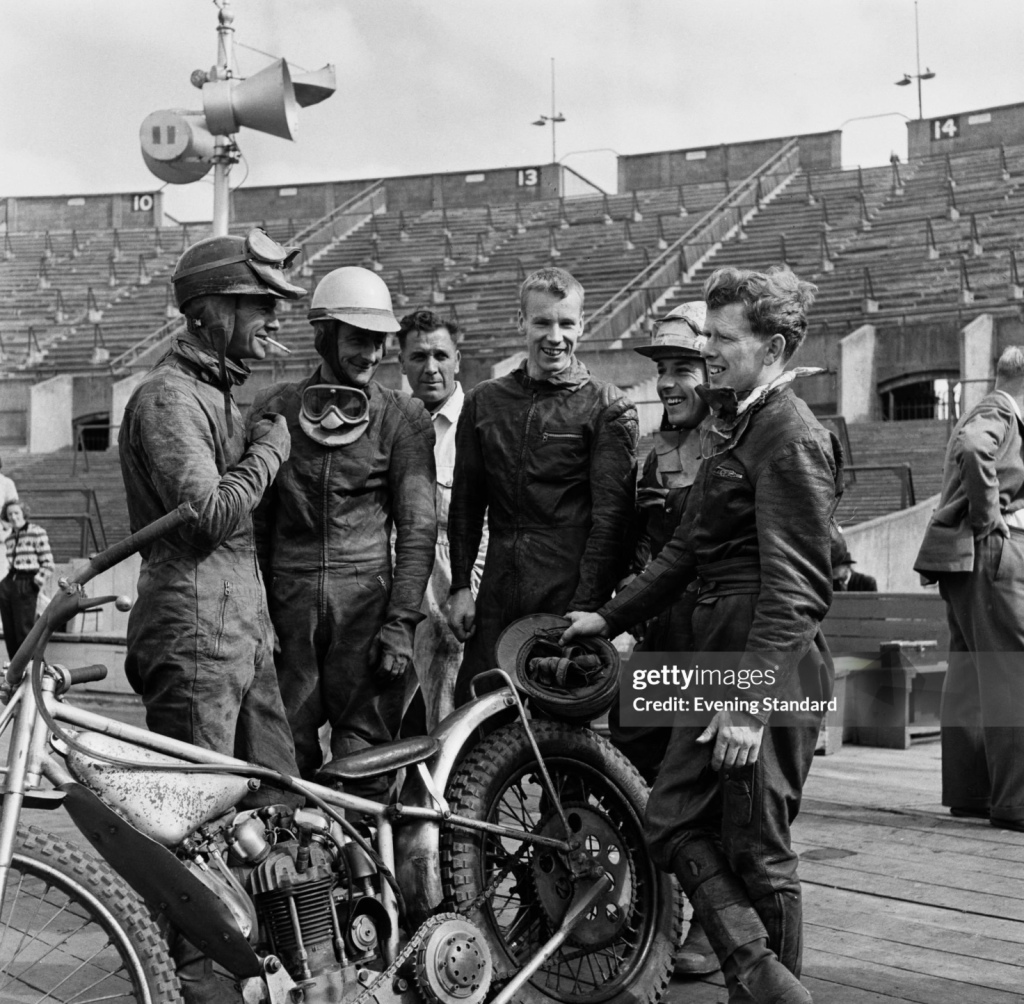
Ronnie Moore, Geoff Mardon, Ove Fundin, George White and Peter Craven prepare to compete in the Speedway World Championship at Wembley in September 1959.
All of these PR shots were taken during daytime, before the crowds arrived…
Finito…
Ronnie Moore on the Bally-rollers and Graham Pickup with the microphone. A free show outside the wall to attract punters to the show,” Levin, Horowhenua, New Zealand. A&P Fair circa1963.
Ronnies friend, Bruce Abernethy: Entered his aging F2 T52 (?) Cooper Climax at a Levin International Meeting. With his tyres painted with oval elliptical white sidewalls. LOL.
And wearing a “Noddy hat” on his helmet.
Actually, he was not a bad driver.
The scrutineer’s and race officials were not amused!
T43